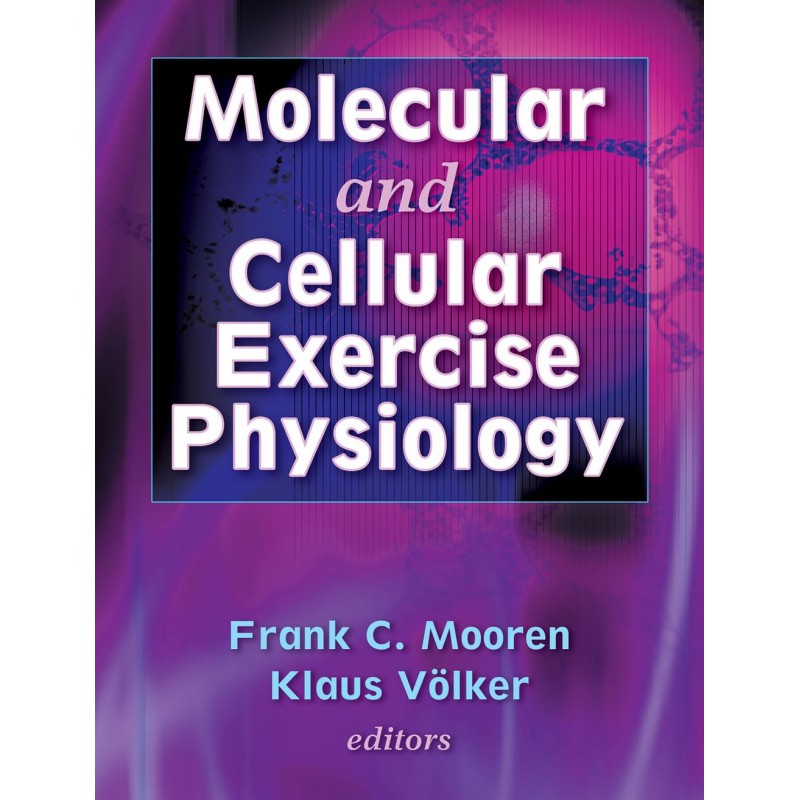- Obniżka


 Dostawa
Dostawa
Wybierz Paczkomat Inpost, Orlen Paczkę, DHL, DPD, Pocztę, email (dla ebooków). Kliknij po więcej
 Płatność
Płatność
Zapłać szybkim przelewem, kartą płatniczą lub za pobraniem. Kliknij po więcej szczegółów
 Zwroty
Zwroty
Jeżeli jesteś konsumentem możesz zwrócić towar w ciągu 14 dni*. Kliknij po więcej szczegółów
With Molecular and Cellular Exercise Physiology, youll gain cutting-edge information on how exercise modulates cellular physiology. Youll be able to use that knowledge to develop better training regimens and injury-prevention and rehabilitation programs. Youll also be able to improve performance. The book is unique in that it is the first comprehensive text to address the effects of physical activity on the cellular and molecular level.
Molecular and Cellular Exercise Physiology highlights the potential of physical training in the prevention and treatment of chronic diseases while thoroughly exploring these topics::
-Fundamental cellular and molecular mechanisms responsible for changes in stroke volume, blood gas homeostasis, pH alterations, blood pressure, and osmosis in response to exercise
-How the exercise effects are mediated and translated into specific cellular and subcellular alterations
Recent fascinating advances in molecular techniques have extended the field of exercise physiology and enabled researchers to address the mechanisms involved on a subcellular and molecular level. Molecular and Cellular Exercise Physiology is a vital reference to help you stay on top of this exciting field.
Opis
Part I: Molecular Exercise Physiology
Chapter 1. The Cell
-Cellular Architecture
-Exercise and the Cell
-Conclusion
Chapter 2. Cellular Life Span
-Cell Cycle and Tissue Turnover
-Cell Death
-Effect of Exercise on Cell Proliferation and Cell Death
-Conclusion
Chapter 3. Genes, Genetic Heterogeneity, and Exercise Phenotypes
-Genes and Genome
-Gene Expression
-Regulation of Gene Expression
-Exercise and Gene Expression
-DNA Sequence Variation
-Genetics and Responsiveness to Exercise Training
-Conclusion
Chapter 4. Proteins and Exercise
-Protein Synthesis
-Protein Degradation
-Exercise and Protein Metabolism
-Conclusion
Chapter 5. Extracellular Matrix and Exercise
-Extracellular Matrices
-Composition of the Interstitial Extracellular Matrix
-Composition of Basement Membranes
-Synthesis of Collagens
-Degradation of Collagens
-ECM of Skeletal Muscle
-Muscle ECM and Physical Activity
Chapter 6. Regulation of Intracellular Ion Composition and pH
-Potassium
-Intracellular pH Regulation
-Magnesium
Chapter 7. Inter- and Intracellular Signaling
-Hormones and Receptors
-Intracellular Signal Transduction
Chapter 8. Energy Turnover and Substrate Utilization
-Skeletal Muscle Carbohydrate Metabolism During Exercise
-Recent Advances in the Regulation of Long Chain Fatty Acid Transport and Metabolism
-Molecular Basis of Lactate Transport in Skeletal Muscle
Chapter 9. Generation and Disposal of Reactive Oxygen and Nitrogen Species
-Reactive Oxygen and Nitrogen Species in Living Organisms
-Reactive Oxygen and Nitrogen Species in Exercise
-Conclusion
Chapter 10. Cellular Responses to Environmental Stress
-Hyperthermia
-Hypoxia
Part II: Exercise and the Cell
Chapter 11. Exercise and the Cardiac Myocyte
-Structure of the Cardiac Myocyte
-Contractile Cycle and Excitation–Contraction Coupling
-Adaptive Hypertrophy and Growth Signaling
-Contractile Function and Calcium Handling
Chapter 12. Exercise and Endothelium
-Endothelium Cell Function
-Effects of Physical Training on Vascular Reactivity
-Conclusion
Chapter 13. Activity-Dependent Adaptive Responses of Skeletal Muscle Fibers
-The Multiplicity of Sarcomeric Protein Isoforms
-Myofibrillar Protein Isoforms and Fiber Diversity
-Metabolic Adaptations of Muscle Fibers to Altered Functional Demands
-Fiber Type Transitions
-Signaling Pathways Related to Fiber Type Transitions
-Conclusion
Chapter 14. Exercise and the Alveolar and Bronchial Epithelial Cell
-Airways
-The Alveolar Epithelium
Chapter 15. Exercise and the Liver Cell
-Hepatic Carbohydrate Metabolism
-Hepatic Lipid Metabolism
-Conclusion
Chapter 16. Exercise and the Adipocyte
-The Adipocyte: Characteristics and Functions
-Adipocyte Receptors and Exercise
-Conclusion
Chapter 17. Erythrocytes
-Red Cell Production
-Principles of O2 Transport by the Hemoglobin Molecule
-Principles of CO2 Transport in the Blood
-Regulation of Red Cell Volume
-Red Cell Influence on Circulation and Respiration
-Erythrocyte and Radicals
-Conclusion
Chapter 18. Leukocytes
-Acute Exercise and Leukocytes
-Mechanisms of Action
-Chronic Exercise and Leukocyte Subpopulations
-Exercise and Infections
-Conclusion
Chapter 19. Exercise and the Brain
-Exercise Improves Cognitive Function in Humans and Prevents Age-Related Brain Atrophy
-Animal Models to Study the Effects of Exercise on Brain Function
-Exercise Up-Regulates Brain-Derived Neurotrophic Factor
-Gene Microarray Analysis Reveals Other Genes That Are Regulated by Exercise
-Exercise Enhancement of Learning and BDNF
-Exercise and Depression
-Definitive Role for BDNF in Human Cognition
-CNS and Peripheral Regulatory Mechanisms of Exercise Effect on BDNF
-Conclusion
